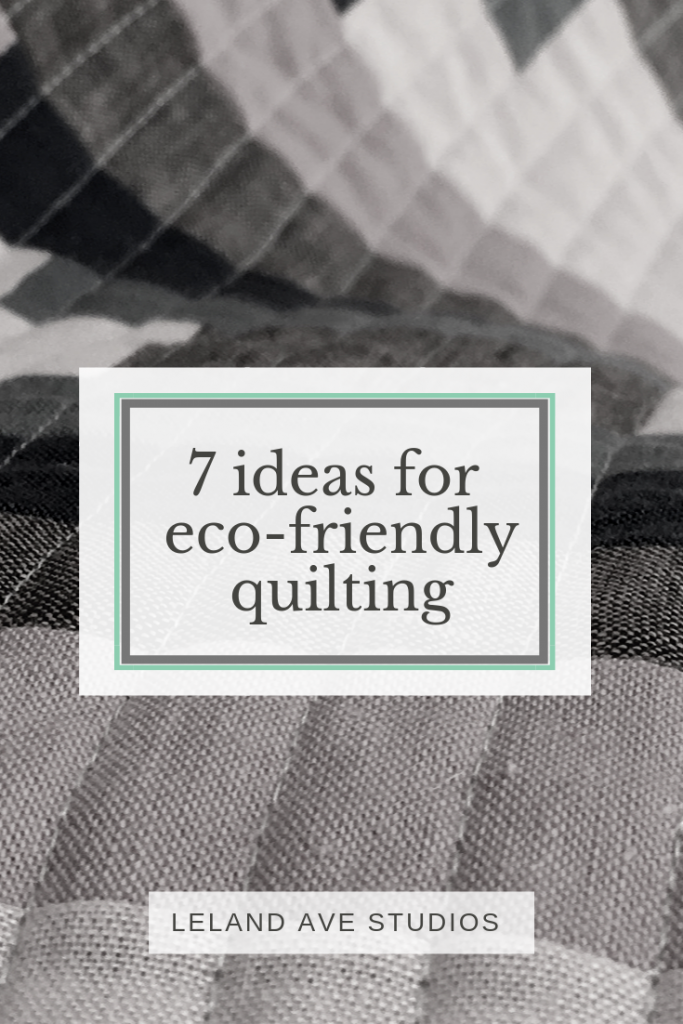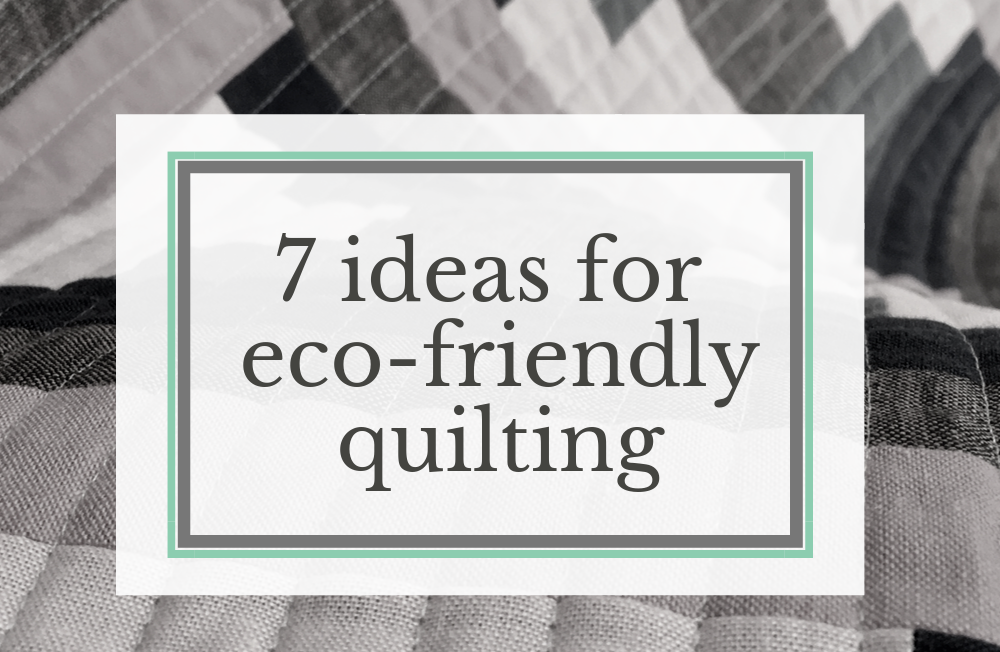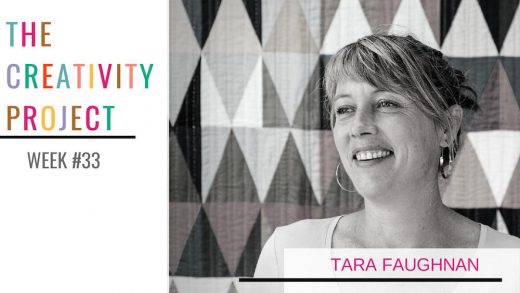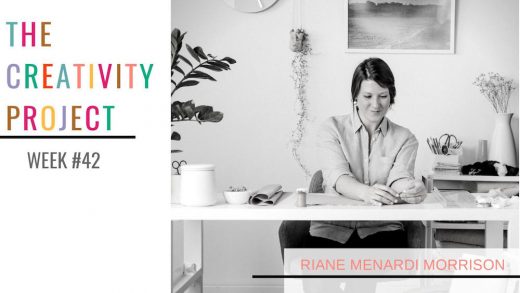With so much gorgeous fabric in the world, and new lines of tempting palettes coming out all the time, it’s hard to think about how our fabric choices can have an impact on the world. It seems so complicated to sift through all of the information out there, and to imagine that tiny little me can really make a difference one way or the other. . . right? But when we all come together to change our habits, we really can have an impact. And one easy way to make a difference is by incorporating some eco-friendly habits into our quilting practice.
If we each consciously choose to use fabrics that we already have in our homes, that we can repurpose, or that we can purchase second-hand (even part of the time), we can limit the amount of resources needed to create new fabrics. We don’t have to change everything all at once. We can take small steps with each project, and over time, our eco-friendly actions will create the change we want to see.
Here are 7 ways that you can easily start making a difference today!
Repurpose
Repurposed fabrics are those that you already have in your home that you can transform into quilting and garment projects. Think about shirts that you love but aren’t in good enough shape to donate; tablecloths that have stains on them; or jeans that no longer fit. Simply cut out the worn or stained parts of the fabric and use the rest to incorporate into a quilt, make a reusable tote for the market, or some other small project. Need some inspiration? Look no farther than these gorgeous quilts by Sherri Lynn Wood.
Reuse
Shopping second hand is the perfect way to score deals on fabrics that are in great shape but no longer wanted by the original owner. What no longer fits someone’s aesthetic can be your good fortune! Shopping second-hand can help you to find those gems of fabrics no longer in print, but are just what you needed to finish a work in progress! Not only that, by buying used, you are saving the earth’s precious resources that would be needed to make a new piece of fabric. So that’s pretty awesome!
Choose Renewable
Fabrics that are made from renewable resources means that they are made from plants that can be regrown relatively quickly, and using a limited number of chemicals. When it comes to batting, for example, bamboo is a hardy, renewable grass that is grown with a relatively low amount of chemicals needed. Similarly, organic cotton is grown without toxic pesticides, which make it an environmentally better option than conventional cottons. Even so, the processes to turn these plants into fabric are not without their flaws. Thus, we should aim to choose these fabrics whenever possible; however, its still best to buy less and buy second-hand before buying new if given the choice.
Recycle or Upcycle
The most sustainable cotton, though, is recycled. Recycled or upcycled cotton is made using post-industrial and post-consumer waste. By not creating products using new cotton crop, recycled cotton helps to reduce water and energy consumption. Plus, it helps to keep cotton clothes out of landfills. Win-win!
Get Scrappy
We’ve all got ’em! So why not use ’em? And let’s be honest, who doesn’t love a good scrappy quilt!?! Saving scraps to use for future projects (and actually using them!) is a great eco-friendly way to make a difference!
Mend It
Visible mending is having a moment, and with good reason. Taking the time to repair a worn and loved item makes a statement. It says “I care enough to use my valuable time to keep this item in use, rather than throwing it away.” That’s pretty powerful, isn’t it?
Make-Do
Last but not least, is the make-do method. I’m going to guess if you checked your stash, you probably have a whole lot of “nothing that works” for this particular project. But what if you challenged yourself to make-do, rather than purchasing a new “perfect” fabric? I’m willing to bet that it might just be even better than you ever could have imagined! Sometimes putting limits on ourselves forces us to stretch ourselves in new ways that we never thought possible. You might just rise to the challenge and end up with your best work yet!
So now, tell me! Which method of eco-friendly quilting speaks most to you? Tell me in the comments!







JCinTX
October 15, 2019 at 9:22 pmMake Do describes me to a T!! Thank you for the wake up call! So many ideas flashed through my stash (& brain) as I read it (& plan to re-read on a regular basis)
lelandavestudios@gmail.com
October 17, 2019 at 2:27 pmI love hearing this, JC! And I’m happy that it sparked so much inspiration! Be sure to keep us posted on your makes!
Barb Keith
October 17, 2019 at 8:58 amAnother way to extend the life of a much used quilt is to turn it over and have the back as the main showcase.
lelandavestudios@gmail.com
October 17, 2019 at 2:26 pmThat’s a great idea, Barb! And incentive to make the back just as pretty as the front!
Ria van Duuren
October 17, 2019 at 2:45 pmI like all your ideas. I also heve a lot of fabric, lying in my cupboard. What i also try to do is make a back of larger parts of fabric i think i won’t use anymore. All together it can make a great back.
lelandavestudios@gmail.com
October 19, 2019 at 4:48 pmOh yes! A great scrappy back is the perfect way to use up those old bits of fabric! Great suggestion!
Kelly O.
October 19, 2019 at 10:03 pmI started purchasing used and vintage sheets at the thrift store for backings for my quilts out of necessity early on in my quilting journey as money was tight and I needed to cut cost to continue my new hobby. Now finding an exciting sheet in good condition to use as a back or just as fabric, is a joy! I also love working with denim and have requested old and damaged jeans from friends and family–when they realize someone actually wants their old jeans, it’s amazing just how many pairs start arriving on your doorstep! I love some of the other ideas you have and will try to introduce them into my own sewing room.
lelandavestudios@gmail.com
October 23, 2019 at 2:13 pmUsing a vintage sheet as a quilt back is a great idea, Kelly! I love how something that once started out of necessity has now become a joyful part of your process!